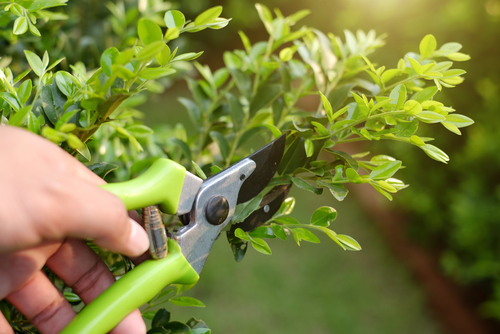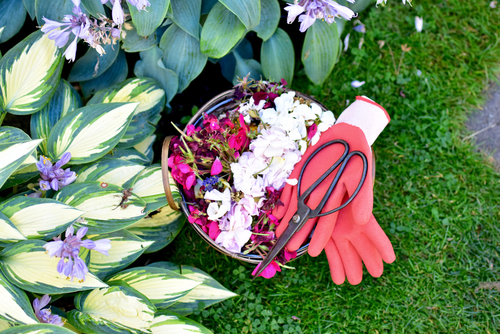
Importance Of A Landscape Maintenance
October 21, 2022
Including Your Children in Gardening Activities
February 3, 2023What Is The Easiest Landscape To Maintain?

What Is The Easiest Landscape To Maintain? Some people find gardening to be a relaxing activity, while others are more focused on the result of a beautiful and well-maintained landscape. If you fall into the latter category, you may be wondering what the easiest landscape to maintain is.
There is one thing that everyone can agree upon when it comes to gardening: maintaining a landscape can be very time-consuming and difficult. You will spend a lot of time weeding and watering your plants, pruning bushes into the right shape, and getting rid of invasive weeds and pests.
Even though it requires a lot of time and effort, maintaining a landscape is worth it when you see the result. A beautiful landscape can add curb appeal to your home, increase its value and make your outdoor space more enjoyable to spend time in. However, if you’re looking for a landscaping solution that doesn’t require a lot of time and effort, you may want to consider a low-maintenance landscape.
What is a low-maintenance landscape?

A low-maintenance landscape is easy to care for and doesn’t require a lot of time or effort, and resources to maintain. This type of landscape is perfect for people who don’t have a lot of time to spend on gardening or those who wish to make the most of their outside space without doing a lot of work.
Ways to create a low-maintenance landscape

- Choosing plants native to your area
Due to their climatic adaptation, they don’t require a lot of water, fertilizer, or pesticides to flourish. Singapore is an example of a country with a tropical climate, and the plants that grow here are very different from the plants that grow in temperate climates. - Choose plants that have low water requirements(Drought-tolerant plants)
You will significantly reduce the amount of time you spend watering your plants if you choose varieties that don’t require a lot of water. Cacti and succulents are examples of plants that have low water requirements and can thrive in dry conditions. - Use natural landscaping materials
Landscaping materials like rocks, gravel, and mulch are low-maintenance and don’t require any watering or fertilizing. They also help to prevent weeds from taking over your landscape. - Use ground covers instead of grass
Groundcover plants spread quickly and densely, covering the ground to prevent weeds from taking root. This means that you won’t have to spend as much time weeding your landscape. They don’t require as much water or maintenance as grass, making them a low-maintenance option. - Create a hardscape
Hardscapes are areas of your landscape that don’t contain any plants, like patios, decks, and walkways. They are easy to care for and don’t require any watering or fertilizing.
Benefits of a low-maintenance landscape

Landscaping is an activity that requires a lot of time, energy, and resources, not to mention a certain amount of skill and knowledge. A low-maintenance landscape can save you a lot of time and money, as well as reduce your carbon footprint.
Time
A low-maintenance landscape requires less time to care for than a traditional landscape. This means that you will have more time to enjoy your outdoor space instead of spending time on landscape maintenance.
Money
A low-maintenance landscape requires fewer resources to care for, which can save you money. You won’t have to buy as much fertilizer, pesticides, or water, and you may not need to hire a professional landscaper to help you maintain your landscape.
Carbon footprint
A low-maintenance landscape requires fewer resources to care for, which can reduce your carbon footprint. This is because the production of these products (fertilizers, pesticides, etc.) creates greenhouse gases that contribute to climate change.
Enjoyment
You won’t have to spend as much time on landscape maintenance, which means that you can spend more time enjoying your outdoor space. A low-maintenance landscape is also more likely to be attractive and enjoyable since you won’t have to worry about weeds or pests taking over your landscape.
Health
You require requires fewer chemicals and pesticides, which can be harmful to your health. By reducing the number of chemicals you’re exposed to, you can reduce your risk of health problems
Best plants for a low-maintenance landscape

Native plants
These are plants that naturally occur in your area, and they generally don’t require a lot of care or attention.
Hardy plants
These are plants that can tolerate a wide range of conditions, and they usually don’t need much water or fertilizer.
Drought-tolerant plants
They are plants that can survive in dry conditions, and they don’t need much water to thrive.
Perennial plants
These are plants that live for more than two years, and they often don’t need to be replanted each year.
Groundcover plants
These are plants that spread out and cover the ground, and they can help to prevent weeds from taking over your landscape.
Shrubs
These are woody plants that can provide structure and interest in your landscape, and they usually don’t need much pruning or maintenance.
Trees
These are the tallest plants in your landscape, and they can provide shade, privacy, and beauty.
Best practices for low-maintenance landscaping

- Prune your plants regularly to remove dead or dying branches and to encourage new growth. Landscape maintenance schedules will vary depending on the type of plant, but you should prune most shrubs and bushes at least once a year.
- Apply a layer of mulch around your plants to help retain moisture and prevent weeds from taking root.
Fertilize your plants according to the manufacturer’s instructions. This will help them to stay healthy and thrive. - Water your plants, but don’t overwater them. Check the soil before watering to make sure that it is dry.
- Pull weeds regularly to prevent them from taking over your landscape.
- Watch for pests and diseases, and treat them accordingly.
- Mow your lawn to keep it healthy and looking its best
What Is The Easiest Landscape To Maintain? – Conclusion

When designing a low-maintenance landscape, it’s important to choose the right plants for your climate and soil type. You should also consider the amount of sun and shade in your landscape, as well as the amount of foot traffic.
A law maintenance landscape has many benefits, including saving you time and money. By following the best practices for low-maintenance landscaping, you can keep your landscape looking its best with minimal effort.




